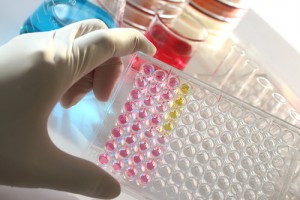Key Spinal Muscular Atrophy Biomarkers Discovered

 A study entitled “Label-free proteomics identifies Calreticulin and GRP75/Mortalin as peripherally accessible protein biomarkers for spinal muscular atrophy” suggests Calreticulin and GRP75/Mortalin as new protein biomarkers for spinal muscular atrophy progression. The results were published in October 2013 issue of Genome Medicine.
A study entitled “Label-free proteomics identifies Calreticulin and GRP75/Mortalin as peripherally accessible protein biomarkers for spinal muscular atrophy” suggests Calreticulin and GRP75/Mortalin as new protein biomarkers for spinal muscular atrophy progression. The results were published in October 2013 issue of Genome Medicine.
Spinal muscular atrophy (SMA) is caused by mutations in the Smn1 gene (survival motor neuron 1), leading to loss or deficient expression of the SMN protein. The disease primarily affects the neuromuscular system, causing death of motor neurons, and is characterized by muscle wasting and impaired mobility. Symptoms’ severity and disease progression varies, however, SMA affects infants mostly — it is the leading cause of death among genetic disorders in infants.
Over the past few years, several studies have focused on better understanding the mechanisms leading to SMA in animal models. Now, there is the need to translate these pre-clinical findings to clinical trials in human patient cohorts. As SMA affects mainly children and infants, clinical trials with these patients is associated with several constraints, so the trials have to be designed for high efficiency and reliability. A key component for an SMA trial is an indicator that allows the monitoring of disease activity and its progression, and accordingly how the patient is reacting to specific therapeutics. These are commonly known as biomarkers. SMA biomarkers that present as robust and reliable are still lacking.
[adrotate group=”3″]
In this study, the authors’ main objective was to identify individual proteins in the neuromuscular system of SMA mice who can be used as biomarkers for SMA. To achieve this, the researchers used a state-of-the-art, label-free proteomics approach. Specifically, the team of researchers at the University of Edinburgh compared the muscle proteome of skeletal muscle in SMA mice at two different periods — a pre-symptomatic and a late-symptomatic time point.
The authors found increased expression of two proteins – Calreticulin and GRP75/Mortalin – that correlated with disease progression. Thus, both proteins were evaluated as robust biomarkers disease progression in SMA mice. Notably, the authors tested skin samples of SMA mice and found both biomarkers are accessible and prone to monitoring from peripheral tissues, such as skin. Detectable Calreticulin and GRP75/Mortalin were also found in a preliminary study in human patients’ muscle biopsies, including SMA patients.
The authors suggest that further studies with larger population oh patient is required to validate their findings. The use of skin biopsies constitutes a less invasive method to perform these studies.







